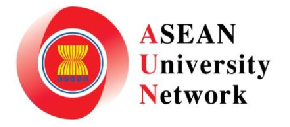
Abstract
The global average sea level is rising at a rate of 3.2 mm per year according to recent observations of the IPCC. One of the main factors in sea level rise is thermal expansion, where greenhouse gases, especially CO2, accumulate and generate heat (climate change), thereby melting glaciers in the polar regions. Two villages in Kampung Bungin Bekasi, Indonesia, have already been experiencing flooding. Climate change can be addressed by environmental conservation and utilization of renewable energy to reduce CO2 production. Environmental conservation can be conducted by planting mangroves, while renewable energy is achieved by using natural renewable resources. Planting 10,000 mangrove seeds through citizen participation and by researchers from the University of Indonesia could create a new coastal ecosystem, which could prevent abrasion and become the habitat of sea biota. Renewable energy based on wind power and solar cell such as wind turbines and photovoltaics (PV) has been installed and used for streetlights, mosque lamps, and freezers. The wind turbine used in this study is made from wood, which is easy to obtain, and is designed to be compatible with the characteristics of Bungin Village, with a capacity of 500 Wp per unit. The total capacity of PV is 1800 Wp, which includes 720 Wp floating PV capacity and 1080 Wp PV monocrystalline capacity. Floating technology is chosen because the coastal areas have limited available land and the soil condition (sand) is inappropriate as a foundation for PV. The installed renewable energy is integrated and completed with a battery system and online monitoring to monitor the site in real time anytime and anywhere.
References
Alongi, D. M. (2012). Carbon sequestration in mangrove forests. Carbon Management, Vol. 3, pp. 313–322. https://doi.org/10.4155/cmt.12.20
Asy’ari, H., & Jarmiko, A. (2012). Intensitas Cahaya Matahari Terhadap Daya Keluaran Panel Sel Surya. Simposium Nasional RAPI XI FT UMS, p. 57. https://doi.org/10.1097/01.NAJ.0000527492.32234.1d
Balica, S. F., Wright, N. G., & van der Meulen, F. (2012). A flood vulnerability index for coastal cities and its use in assessing climate change impacts. Natural Hazards, Vol. 64, pp. 73–105. https://doi.org/10.1007/s11069-012-0234-1
Carneiro, M. J., Breda, Z., & Cordeiro, C. (2016). Sports tourism development and destination sustainability: the case of the coastal area of the Aveiro region, Portugal. Journal of Sport & Tourism, 20(3–4), 305–334. https://doi.org/10.1080/14775085.2016.1220863
Cetin, M. (2016). Sustainability of urban coastal area management: A case study on Cide. Journal of Sustainable Forestry, 35(7), 527–541. https://doi.org/10.1080/10549811.2016.1228072
Cisneros-Martínez, J. D., & Fernández-Morales, A. (2015). Cultural tourism as tourist segment for reducing seasonality in a coastal area: the case study of Andalusia. Current Issues in Tourism, 18(8), 765–784. https://doi.org/10.1080/13683500.2013.861810
Gibran, F. R., Safhire, M., & Warits, A. D. (2016). Design of NACA 4415 Taperless Twistless wind turbine blade using twist optimization for Indonesia wind characteristics. ARPN Journal of Engineering and Applied Sciences, 11, 2751–2758. http://www.arpnjournals.org/jeas/research_papers/rp_2016/jeas_0216_3715.pdf
GoI. (2017). Rencana Umum Energi Nasional (RUEN) Peraturan Presiden Republik Indonesia nomor 22 tahun 2017.
Huxham, M., Emerton, L., Kairo, J., Munyi, F., Abdirizak, H., Muriuki, T., … Briers, R. A. (2015). Applying climate compatible development and economic valuation to coastal management: a case study of Kenya’s mangrove forests. Journal of Environmental Management, 157, 168–181. https://doi.org/10.1016/j.jenvman.2015.04.018
Ismail, Kamal, S., Purnomo, Sarjiya, & Hartono, B. (2015). Economic Feasibility of Wind Farm: A Case Study for Coastal Area in South Purworejo, Indonesia. Energy Procedia, Vol. 65, pp. 146–154. https://doi.org/10.1016/j.egypro.2015.01.049
Jacobson, M. Z., & Delucchi, M. A. (2011). Providing all global energy with wind, water, and solar power, Part I: Technologies, energy resources, quantities and areas of infrastructure, and materials. Energy Policy, 39(3), 1154–1169. https://doi.org/10.1016/j.enpol.2010.11.040
Ketenagalistrikan, K. E. & S. D. M. D. J. (2016). Faktor Emisi Gas Rumah Kaca (GRK) Sistem Interkoneksi Ketenagalistrikan (2016). Retrieved from http://gatrik.esdm.go.id/assets/uploads/download_index/files/28be7-faktor-emisi-grk-tahun-2016.pdf
Marfai, M. A., & King, L. (2008). Potential vulnerability implications of coastal inundation due to sea level rise for the coastal zone of Semarang city, Indonesia. Environmental Geology, Vol. 54, pp. 1235–1245. https://doi.org/10.1007/s00254-007-0906-4
Measey, M. (2010). Indonesia: A Vulnerable Country in the Face of Climate Change. Global Majority E-Journal, Vol. 1, pp. 31–45. Retrieved from http://unfccc.int/meetings/cop_13/items/4049txt.php
NASA. (2017). Sea Level. Retrieved from https://climate.nasa.gov/vital-signs/sea-level/
Nejat, P., Jomehzadeh, F., Taheri, M. M., Gohari, M., & Muhd, M. Z. (2015). A global review of energy consumption, CO2 emissions and policy in the residential sector (with an overview of the top ten CO2 emitting countries). Renewable and Sustainable Energy Reviews, Vol. 43, pp. 843–862. https://doi.org/10.1016/j.rser.2014.11.066
Norton, R. K., David, N. P., Buckman, S., & Koman, P. D. (2018). Overlooking the coast: Limited local planning for coastal area management along Michigan’s Great Lakes. Land Use Policy, 71, 183–203. https://doi.org/10.1016/j.landusepol.2017.11.049
Ramli, M. A. M., Hiendro, A., & Al-Turki, Y. A. (2016). Techno-economic energy analysis of wind/solar hybrid system: Case study for western coastal area of Saudi Arabia. Renewable Energy, Vol. 91, pp. 374–385. https://doi.org/10.1016/j.renene.2016.01.071
Romañach, S. S., DeAngelis, D. L., Koh, H. L., Li, Y., Teh, S. Y., Barizan, R. S. R., & Zhai, L. (2018). Conservation and restoration of mangroves: Global status, perspectives, and prognosis. Ocean & Coastal Management, 154, 72–82. https://doi.org/10.1016/j.ocecoaman.2018.01.009
Roy, A. K. D. (2016). Local community attitudes towards mangrove forest conservation: Lessons from Bangladesh. Marine Policy, 74, 186–194. https://doi.org/10.1016/j.marpol.2016.09.021
Sahu, A., Yadav, N., & Sudhakar, K. (2016). Floating photovoltaic power plant: A review. Renewable and Sustainable Energy Reviews, Vol. 66, pp. 815–824. https://doi.org/10.1016/j.rser.2016.08.051
Sari, D. P., & Kusumaningrum, W. B. (2014). A technical review of building integrated wind turbine system and a sample simulation model in central java, Indonesia. Energy Procedia, Vol. 47, pp. 29–36. https://doi.org/10.1016/j.egypro.2014.01.193
Shahsavari, A., & Akbari, M. (2018). Potential of solar energy in developing countries for reducing energy-related emissions. Renewable and Sustainable Energy Reviews, 90, 275–291. https://doi.org/10.1016/j.rser.2018.03.065
Shrestha, R. M., Anandarajah, G., & Liyanage, M. H. (2009). Factors affecting CO2 emission from the power sector of selected countries in Asia and the Pacific. Energy Policy, Vol. 37, pp. 2375–2384. https://doi.org/10.1016/j.enpol.2009.01.032
Steffensen, J. P., Andersen, K. K., Bigler, M., Clausen, H. B., Dahl-Jensen, D., Fischer, H., … White, J. W. C. (2008). High-resolution greenland ice core data show abrupt climate change happens in few years. Science, Vol. 321, pp. 680–684. https://doi.org/10.1126/science.1157707
Sullivan, C., & Meigh, J. (2005). Targeting attention on local vulnerabilities using an integrated index approach: The example of the climate vulnerability index. Water Science and Technology, Vol. 51, pp. 69–78. https://doi.org/10.2166/wst.2005.0111
Surjosatyo, A., & Warits, W. D. (2016). Desain Micro Scale Horizontal Axis Wind Turbine Blade Untuk Karakteristik Angin Di Muara Gembong Bekasi, Proceeding Seminar Nasional Tahunan Teknik Mesin XV (SNTTM XV), Bandung, 5-7 Oktober 2016. https://www.researchgate.net/profile/Syafri_Gt/publication/311769457_SNTTM_XV_ITB/links/5859ea9e08aeffd7c4fd10b2/SNTTM-XV-ITB.pdf
Takagi, H., Esteban, M., Mikami, T., & Fujii, D. (2016). Projection of coastal floods in 2050 Jakarta. Urban Climate, Vol. 17, pp. 135–145. https://doi.org/10.1016/j.uclim.2016.05.003
Tina, G., Gagliano, S., & Raiti, S. (2006). Hybrid solar/wind power system probabilistic modelling for long-term performance assessment. Solar Energy, Vol. 80, pp. 578–588. https://doi.org/10.1016/j.solener.2005.03.013
WWF Indonesia. (2017). Seputar Perubahan Iklim. Retrieved December 20, 2017, from https://www.wwf.or.id/tentang_wwf/upaya_kami/iklim_dan_energi/solusikami/kampanye/powerswitch/spt_iklim/
Zikra, M., Suntoyo, & Lukijanto. (2015). Climate Change Impacts on Indonesian Coastal Areas. Procedia Earth and Planetary Science, Vol. 14, pp. 57–63. https://doi.org/10.1016/j.proeps.2015.07.085
Zubair, A., Tanvir, A. A., & Hasan, M. M. (2012). Optimal planning of standalone solar-wind-diesel hybrid energy system for a coastal area of Bangladesh. International Journal of Electrical and Computer Engineering, 2(6), 731. https://doi.org/10.1109/ICGET.2015.7315111
Recommended Citation
Sofianita, Rifka; Surjosatyo, Adi; and Siregar, Sri Rachmawati
(2019).
Solution concerning climate change and utilization of Wind Turbine and Floating PV in Coastal Area.
ASEAN Journal of Community Engagement, 3(2).
Available at: https://doi.org/10.7454/ajce.v3i2.1066







